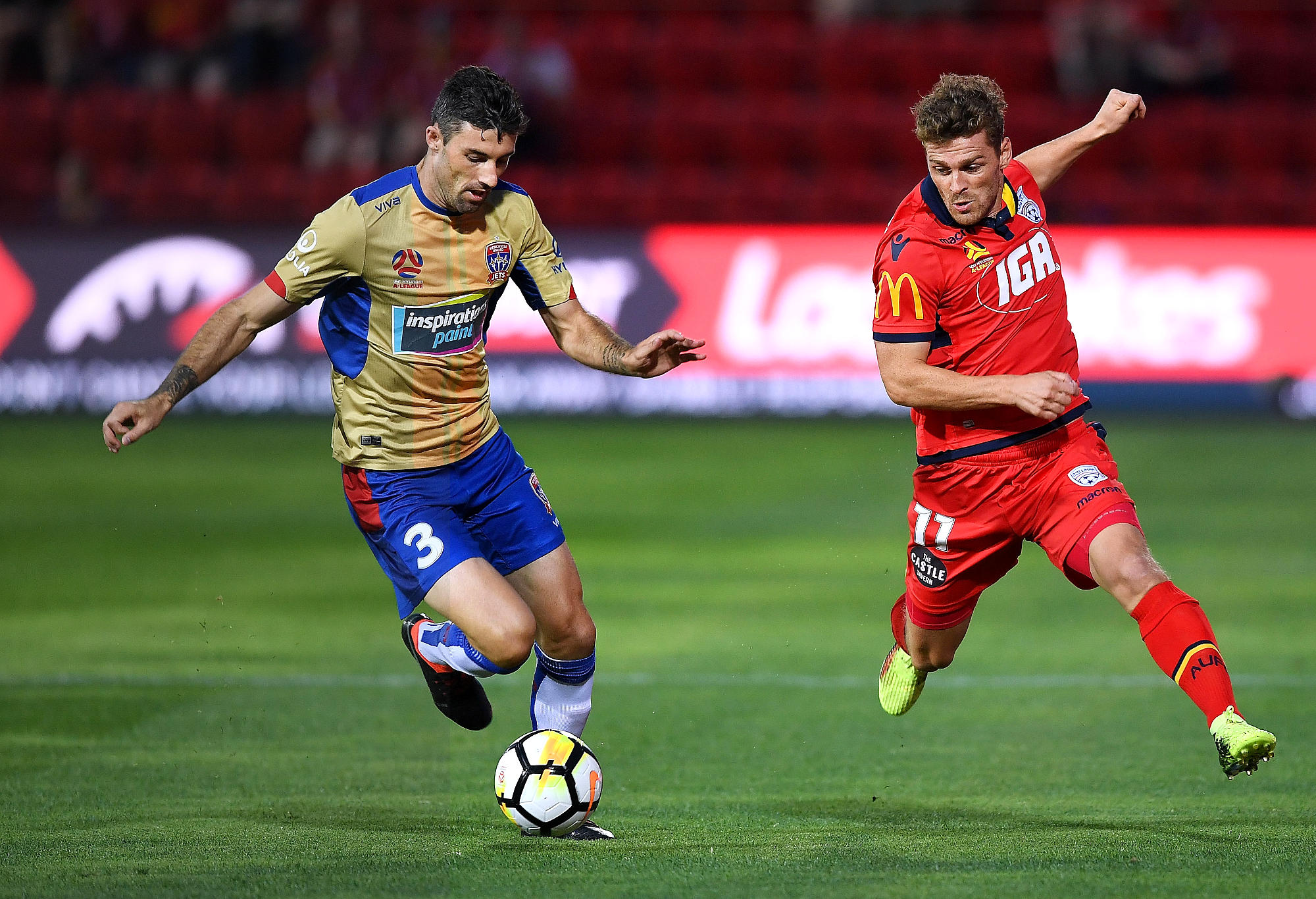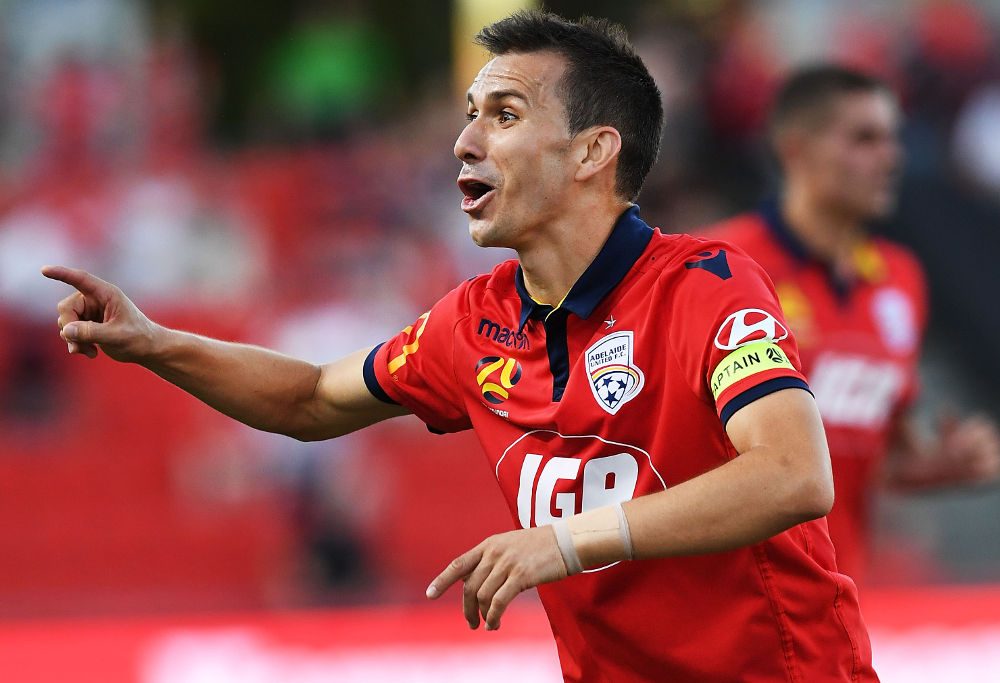Stade Brestois 29: Why they are the story of the top five leagues this season
This season the top five leagues rankings of European football have been flipped on its head, as new competition heavyweights emerge. Just look at…

There will be two consequential matches in this week’s final regular season round.
If Western Sydney – 33 points, and in sixth – lose to Adelaide – 36 points, and in fifth – then the winner of Brisbane v Perth – both equal on 32 points, in seventh and eighth respectively – could snatch that last finals slot.
In the event of a Wanderers loss and a draw between the teams below, goal difference would need to be taken into account, with Brisbane and the Wanderers equal on -8, and Perth further back on -12. Brisbane, it seems, in this case, would have the advantage if they drew and Wanderers lost.
This is a glowing point of relevancy on the table, with everything of real consequence already sorted.
So, with that in mind, why not stroll through some of the data that the 2017-18 season has produced? This has been a season that has swayed a little uneasily, troubled by a general downturn in enthusiasm, a few wincing off-field nonsenses, all while muddling through under the light sedative of Sydney FC’s near-pillar-to-post dominance.
Let’s start with that dominance.
Sydney will finish the regular season having held the top spot for 22 of the 27 rounds. They have scored 63 goals and conceded 22, which means their goal difference of +41 is a higher figure than more than half the league’s goal-scored tally.
Newcastle’s is the next highest goal difference, at +14. Their points-per-game rate is 2.35, almost a full point above the league average.
They have conceded 0.85 goals-per-game; the next stingiest team is Melbourne City, at 1.19 goals conceded-per-game. Four out of their 19 wins were by four or more goals, more than any other team.
They conceded more than one goal on six occasions, but only three of those matches resulted in defeat. Their potency in attack and miserliness in defence was astonishing for the second straight year.
But are there any slightly less obvious numbers to note? Well, of all the defenders who have completed more than 80 long passes, Jordy Buijs has done so at the highest rate of accuracy (63%), by some distance. Alex Wilkinson (58 per cent) isn’t far behind.
Anyone who has watched Sydney play – and play well – this season will have noticed how often Buijs’s passing range is used; the Sydney fullbacks surge up, the central pair split and cover the vacated areas on the wings, and Buijs is given the ball and told to distribute up the field from deep.
This is a mechanism that Graham Arnold has developed to suit the talents of his players, the mark of a keen tactician.
Newcastle have lost their last three matches, conceding 10 goals in the process; to put that in perspective, it took nine games for them to concede that many to start the season. It has put a serious dampener on their campaign, which has otherwise been astonishingly successful.
A high-octane offence was based on directness and speed; they have the fewest passes-per-goal of any A-League team and have the second-lowest average possession.
But they’ve smacked in more total shots-on-target than any other team (148), and Dimi Petratos and Andrew Nabbout are fourth and fifth for shots-on-target among players, even though the latter left for Japan in early March.
Their system was unashamedly vertical in nature; no team played fewer backwards passes than Newcastle, and every other team sent in more crosses – if you have vague memories of the Jets crossing the ball a lot, it’s likely Petratos you’re thinking of, and only him. Strangely enough; only Leroy George sent in more crosses than Petratos this season, but no other Jet appears in the league’s top 20 in this regard – it seems as though only Petratos had the license to cross in volume numbers, for some reason.
We’ll see whether this system can survive the heightened conditions of the finals and whether Newcastle’s scoring form can return; of the players to score more than five goals this season, only Oriel Riera and Bobo needed more shots to do so than Petratos.
 (Photo by Mark Brake/Getty Images)
(Photo by Mark Brake/Getty Images)For City, these final few rounds have been hugely encouraging; the continued brilliance of Daniel Arzani and the return of Bruno Fornaroli has fired them to three straight victories – likely four straight, with Wellington next this weekend – to end the regular season.
Arzani’s dribbling numbers are truly frightening; he’s made 78 successful dribbles this season, 15 more than second-placed Andrew Hoole, and 20 more than third-placed Diego Castro, both of whom have played at least six more games than Arzani.
No A-League player beats their man more easily or, indeed, goes down quite so easily.
Warren Joyce also seems to have found a settled starting XI; the same team has started the last four matches, three of which have been clean sheet victories. Remembering back to the Tim Cahill saga, the sudden departure of Ross McCormack, and Joyce’s prior habit of fiddling with the line-up, this sense of permanence is something of a relief.
For Melbourne Victory, a six-match winless run to begin the season has really hamstrung what would have been a better campaign. Their standout player has been Leroy George, whose personal season ranks among the best in league history, certainly in attack.
In almost every play-making metric, George appears inside the top five: assists, shot assists, goal involvements, chances created, key passes, accurate crosses – Leroy is there, near the top of the list.
He’s also scored the equal-second-most goals from free kicks (3) and has smacked in three goals from outside the box. When the Victory were mired in their early-season rut, George often appeared the only functional attacker on the pitch.
His brace-and-assist performance against Ulsan in the Asian Champions League was probably the best individual performance seen by an A-League player in that competition, save perhaps for Ante Covic’s heroics in the Wanderers’ 2014 final victory.
If I could tack on an odd stat here too; Victory have performed better away from home this season, for some reason, earning slightly more points-per-game on the road (1.67) than at home, and conceding slightly fewer goals (1.33) per game. Could this have anything to do with the North Terrace ceasing their active support at the end of last year?
Adelaide have settled at the top of that belt of mediocrity that spans the bulging middle section of the table, five points below fourth, three points above eighth. Unsurprisingly, the numbers are equally middling; as a team they’re seventh in goals scored, and sixth in goals conceded.
They’re seventh in passes attempted and completed. They’re solid defensively, but not remarkably so, allowing the equal-third-fewest shot on target. Is there anything statistically noteworthy about them at all?
Well, actually, yes; Marco Kurz appears to have instated a system that utilises crossing to such a degree, it’s almost startling. As a team, Adelaide lead the league in crosses made, but they’ve attempted over 100 more crosses than the second-placed team.

(Photo by Mark Brake/Getty Images)
Naturally, they lead the league in completed crosses as well, but this due to pure volume; their rate of accuracy is good (25%) but not enough to justify the mammoth amount they bloot in every game, sitting second to Sydney’s (27%).
They shoot often, but, as Ante Jukic elucidated beautifully in this Guardian piece from last month, generally these shots are not quality opportunities.
This is further reflected in the fact Adelaide has won the equal-most corners in the league; crossing endlessly to set defences will result in a fair few corners, but this clearly shows that corners are not always a byproduct of quality offensive pressure.
There is a caveat to this; Johan Absalonsen, who has been injured for huge portions of Adelaide’s season, is actually third in the league for goals-per-90-minutes, among players to have made 9 or more appearances (Absalonsen has made 10).
He also ranks inside the top five for headed goals-per-90-minutes. To put it more simply, he’s started just seven games for the Reds this season and has managed to score in all but two of those starts.
Adelaide have dearly missed his finishing, especially in the air, and so their approach may seem a little less futile if he’s fit and firing in the finals.
Feel free to discuss the lingering impressions you’ve all had of this regular season – statistical or otherwise – and what they might mean for the finals below the line.
Part two is coming tomorrow.